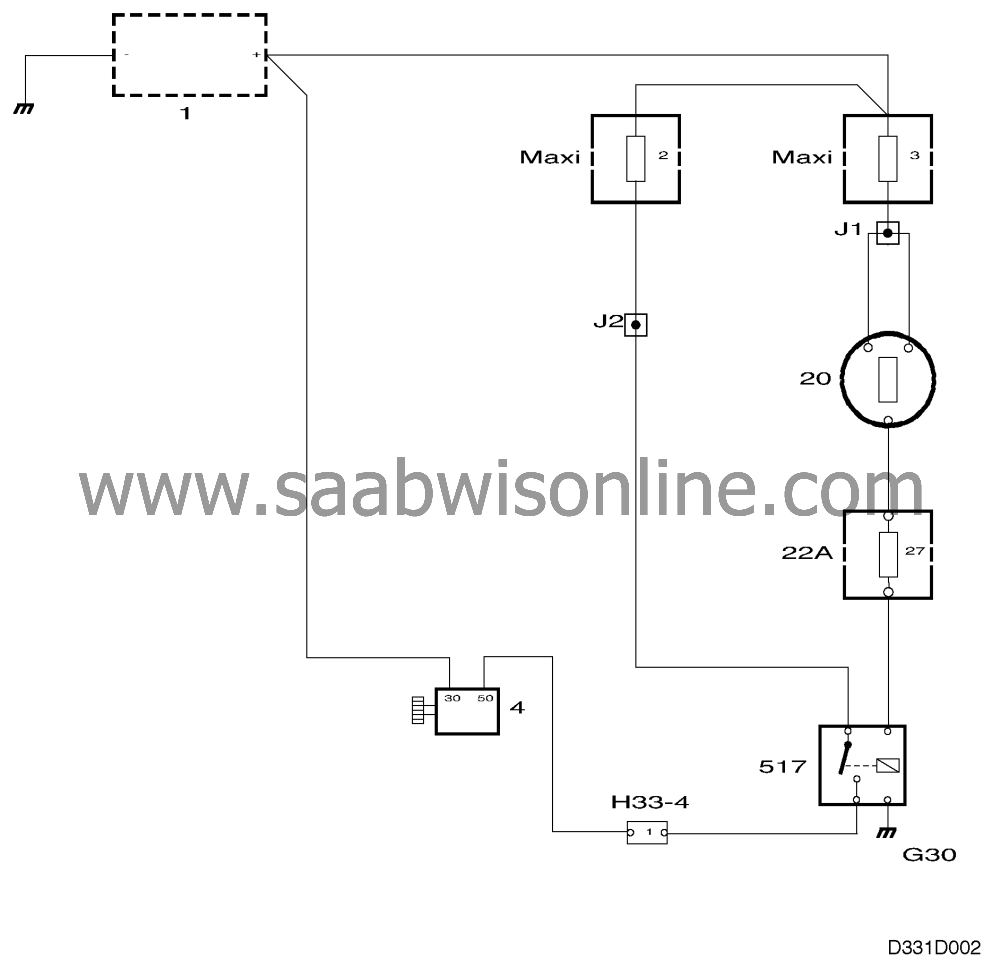Starter motor, principle of operation
|
|
Starter motor, principle of operation
|
Components
The starter motor circuit is extremely simple in design. It
consists of two sub-circuits:
Working circuit
The working circuit goes from the positive battery terminal to
terminal 30 on the starter motor, through which the solenoid is
supplied with working current.
Operating circuit
The operating circuit goes from the positive battery terminal to the
ignition switch and on to the starter relay, and also via the starter
relay to terminal 50 on the starter motor, through which the solenoid
is supplied with operating current.
Principle of operation
When the ignition switch is turned to the Start position the starter
relay operates, closing the operating circuit to the solenoid via
terminal 50.
The solenoid moves the pinion into engagement with the ring gear,
closing the main contacts so that the starter motor commutator is
supplied with current from terminal 30 via slip-rings and brushes.
Once the engine starts, the flywheel will soon exceed the speed of the
starter motor. This causes a free-wheel to disengage the pinion from
its shaft and so prevent overrevving of the starter motor.
Releasing the ignition key breaks the starter circuit and also breaks
the operating circuit to the solenoid. A spring then returns the pinion
to its rest position.



